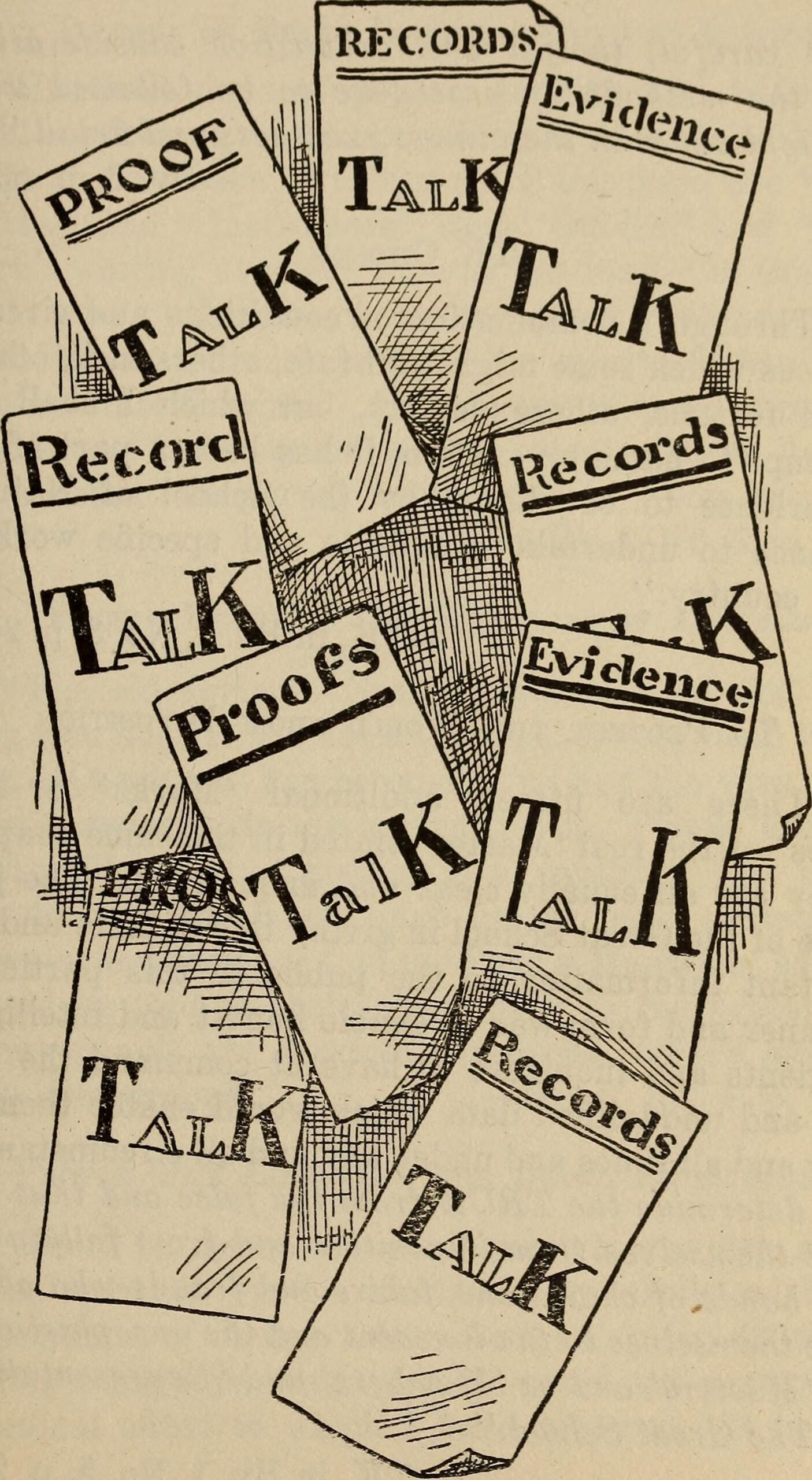“If Your Eye Causes You to Sin, Pluck It Out”

The teaching about plucking out your eye or cutting off your hand appears several times in the Gospels, yet Christians throughout history haven’t walked around maimed. Jesus said, “If your right eye makes you stumble, tear it out, and throw it from you; for it’s better for you to lose one of the parts of your body than for your whole body to be thrown into hell.” Biblical scholars widely recognize this as hyperbole—intentional exaggeration to make a point, emphasizing the radical measures needed to avoid sin.
For a full scholarly treatment of hyperbole in Jesus’ sayings, see Robert H. Stein, Difficult Sayings in the Gospels; Jesus’ Use of Overstatement and Hyperbole, which demonstrates that Jesus regularly employed this literary device. The extreme nature of the language serves to shock listeners into recognizing the seriousness of moral compromise rather than advocating literal self-mutilation.
“I Am the Bread of Life”
Notice how these I am sayings are metaphors. Metaphors are powerful because of how they spark the imagination into action. With each metaphor, we are invited to imagine the implications of Jesus saying he is equivalent to bread, or to light or to a vine. When Jesus declares himself the bread of life, he’s not claiming to be an actual loaf but using familiar imagery to convey spiritual nourishment.
When Jesus says he is the “bread of life,” he elaborates that it is his Father “who gives [this] true bread from heaven” and offers life to the world. Those who feed on this bread will live forever. Jesus as bread is, therefore, a portrait of true spiritual nourishment. The metaphor draws on Old Testament references to manna in the wilderness, creating layers of meaning that his audience would have immediately understood.
“Hate Your Father and Mother”
Perhaps no saying of Jesus causes more confusion than his apparent command to hate one’s family. Such rhetorical emphasis typifies ancient and even modern Semitic cultures. G. B. Caird, in The Language and Imagery of the Bible, notes the frequent use of hyperbole among Semitic peoples, and notes that “its frequent use arises out of a habitual cast of mind” which tends to view matters in extremes. As a result, statements like Luke 14:26 are simply typical of this mindset that encourages extreme forms of expression.
It is, they say, an case of Semitic hyperbole. Critics want to read this as literal hate; we reply by identifying such sayings as containing a rhetorical emphasis, not referring to literal hate. The word “hate” here functions comparatively, meaning that devotion to Christ must be so complete that all other relationships appear secondary by contrast. This interpretation aligns with Jesus’s consistent emphasis on love and family relationships elsewhere in his teaching.
“It’s Easier for a Camel to Go Through the Eye of a Needle”

The statement that it’s easier for a camel to go through the eye of a needle than for a rich man to enter the kingdom of God is both figurative and hyperbole. This vivid imagery creates an impossible scenario to emphasize the extreme difficulty wealth poses to spiritual devotion. Ancient Middle Eastern listeners would have immediately recognized the absurdity of the comparison.
The saying employs the largest animal familiar to Jesus’s audience contrasted with the smallest opening they knew. Some scholars have suggested the “eye of the needle” referred to a small gate in Jerusalem, but this interpretation lacks historical evidence. The straightforward reading as intentional exaggeration better serves Jesus’s rhetorical purpose of shocking his wealthy listeners into reconsidering their priorities.
“I Am the Door”
Imagine sitting with the disciples as Jesus teaches, “I am the vine, you are the branches. If you remain in me and I in you, you will bear much fruit; apart from me you can do nothing.” This isn’t just a statement, it’s a powerful metaphor that Jesus, in His wisdom, chose to convey a complex spiritual truth in a way His agricultural society would immediately grasp. Similarly, when Jesus calls himself “the door,” he’s using architectural imagery to communicate spiritual access.
The metaphor draws on the familiar image of sheep pens, where a single entrance provided both protection and controlled access. Jesus positions himself as the exclusive pathway to spiritual safety and salvation. Every image resonates with layers of meaning, most of the time connecting back to Old Testament themes. This means that Jesus is equating himself to something with scriptural resonance, heightening the theological weight of each claim.
“You Must Be Born Again”

Nicodemus’s confusion over being born again demonstrates how literal interpretation can miss spiritual truth. The Greek word “anothen” can mean both “again” and “from above,” creating intentional ambiguity that forces deeper contemplation. Jesus uses physical birth as a metaphor for spiritual transformation, not advocating for literal re-entry into the womb.
This saying exemplifies how Jesus often used literary devices to convey nuanced, spiritual meaning. Literary devices make our communication more interesting, and they communicate truth in a way that is more nuanced, robust, and multi-dimensional than literal statements. The metaphor of birth perfectly captures the radical nature of spiritual conversion while remaining accessible to his audience.
“You Are the Salt of the Earth”
Parables are generally considered to be short stories such as the Good Samaritan, and are differentiated from metaphorical statements such as, “You are the salt of the earth.” This metaphorical declaration about Jesus’s followers emphasizes their preservative and flavoring function in society. Salt in the ancient world served crucial purposes beyond seasoning, particularly in preservation and purification.
The metaphor works on multiple levels – salt prevents decay, enhances flavor, and was extremely valuable in ancient economies. Jesus’s followers are meant to function similarly in society, preventing moral decay and enhancing the spiritual atmosphere around them. The saying clearly operates in metaphorical rather than literal territory, as humans are obviously not crystalline minerals.
“Remove the Plank from Your Own Eye”

Why do you look at the speck of sawdust in your brother’s eye and pay no attention to the plank in your own eye? This vivid imagery creates an absurd mental picture that serves to highlight hypocrisy in moral judgment. The contrast between a tiny speck and a massive plank emphasizes how we tend to magnify others’ faults while minimizing our own.
The metaphor employs carpentry imagery familiar to Jesus’s audience, possibly drawing on his own background. The physical impossibility of having a wooden plank lodged in one’s eye while still being able to see clearly enough to notice sawdust in another’s eye creates the intended humorous effect. This literary device forces listeners to examine their own moral vision before attempting to correct others.
“If You Have Faith Like a Mustard Seed”
The promise that faith the size of a mustard seed can move mountains has led to misunderstanding among those seeking literal mountain relocation. Emphasis is needed, but to spell out exceptions or to explain that the exclusivity is made for the sake of emphasis would dull the point. Thus exceptions can not be ruled out on the basis of exclusive language, and contradictions cannot be asserted because of it. The saying employs the smallest seed known to Jesus’s agricultural audience to emphasize that even minimal genuine faith produces extraordinary results.
Mountains in biblical literature often symbolize seemingly insurmountable obstacles or challenges. The metaphor teaches that authentic faith, regardless of its apparent size, can overcome what appears impossible. The hyperbolic nature of the statement drives home the transformative power of genuine trust in God rather than promising literal geological manipulation.
“Follow Me, and Let the Dead Bury Their Own Dead”

This seemingly harsh response to a potential disciple who wanted to bury his father first demonstrates Jesus’s use of paradoxical language for emphasis. The phrase creates an apparent logical impossibility – how can the dead bury anyone? This forces listeners to move beyond literal interpretation to grasp the spiritual priority being established.
Most likely Jesus deliberately chose the harsh and extreme language which we find in Luke. It is in the tone of the occasion. He was calling for volunteers who renounce everything, renounce (“hate”) life itself. The saying contrasts spiritual death with physical death, emphasizing that those who are spiritually dead can attend to physical matters while the spiritually alive must prioritize spiritual calling. The urgency of kingdom work takes precedence over conventional social obligations.
The teachings of Jesus represent some of the most sophisticated use of literary devices in religious literature. Scholars have commented that although these parables seem simple, the messages they convey are deep, and central to the teachings of Jesus. Christian authors view them not as mere similitudes that serve the purpose of illustration, but as internal analogies in which nature becomes a witness for the spiritual world. Understanding when Jesus employed metaphor, hyperbole, and symbolic language rather than literal instruction helps us grasp the deeper spiritual truths he intended to communicate. These literary techniques don’t diminish the authority of his words but rather demonstrate the masterful way he used familiar concepts to convey eternal principles. The key lies in recognizing that the most profound truths often require more than straightforward prose to fully capture their meaning.


